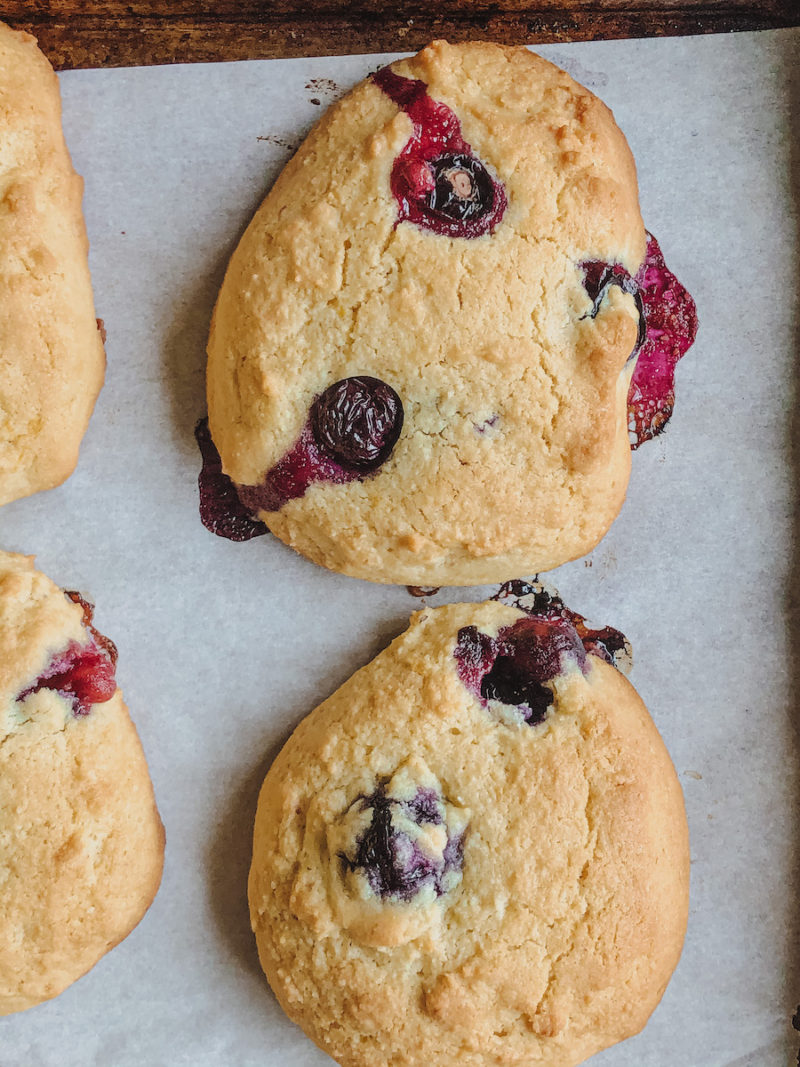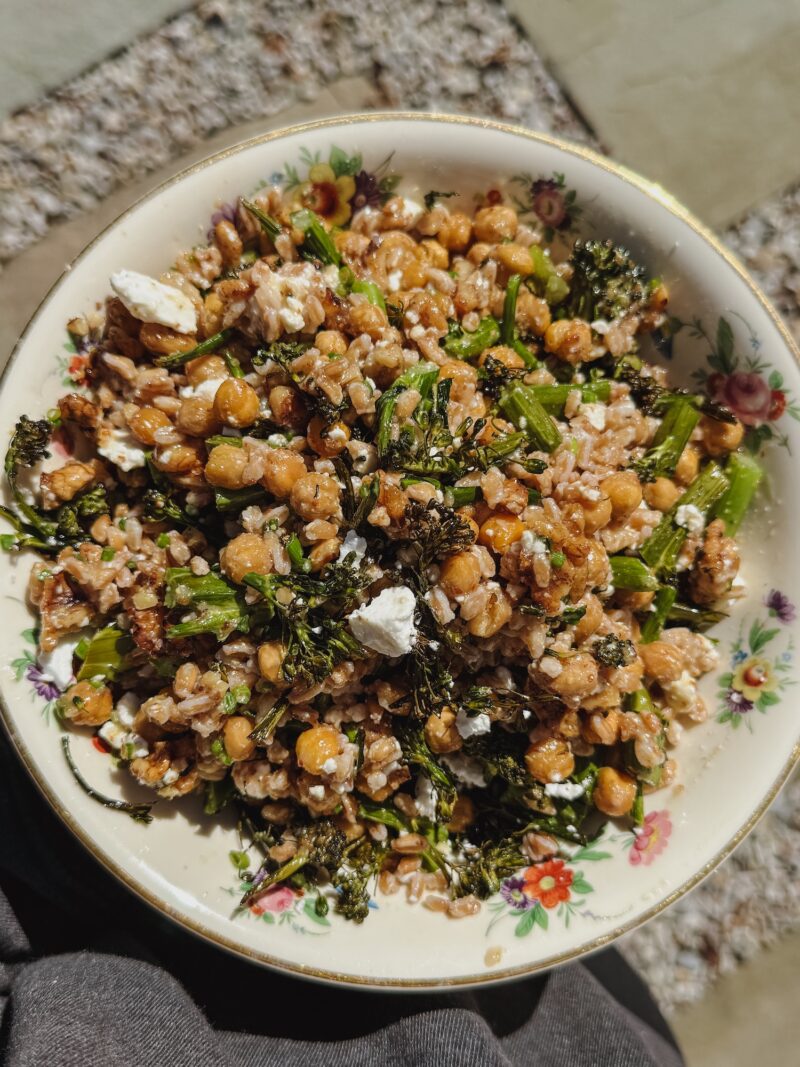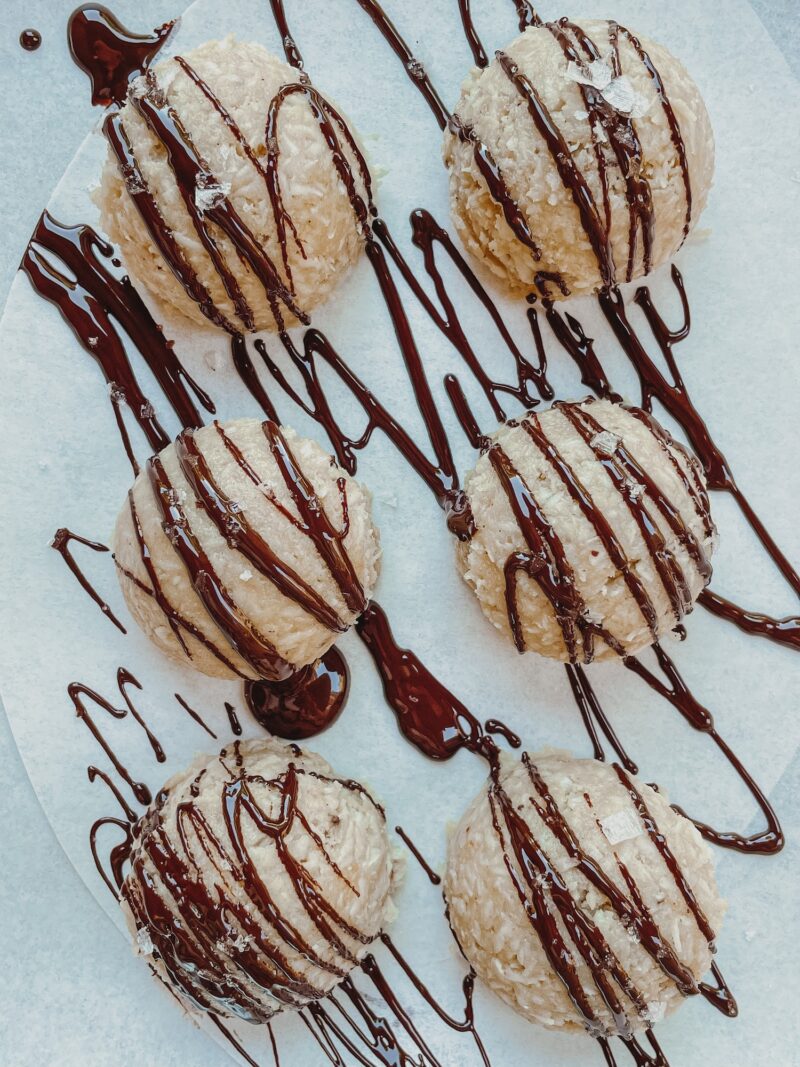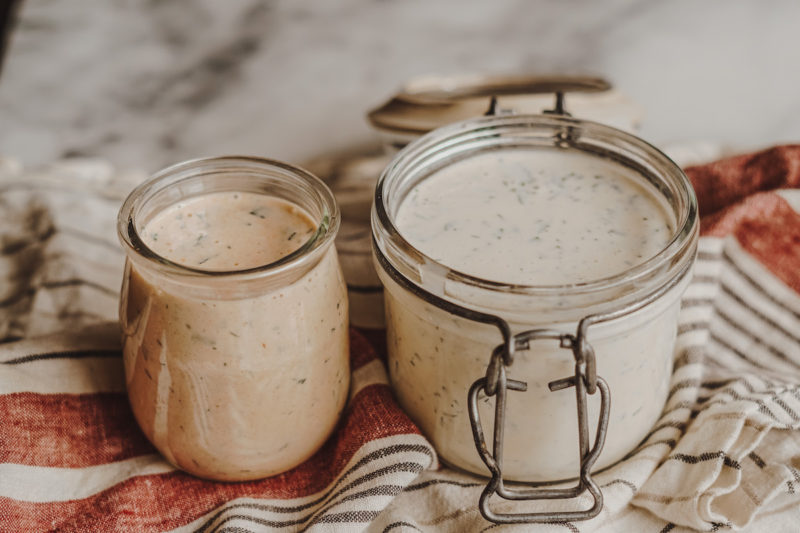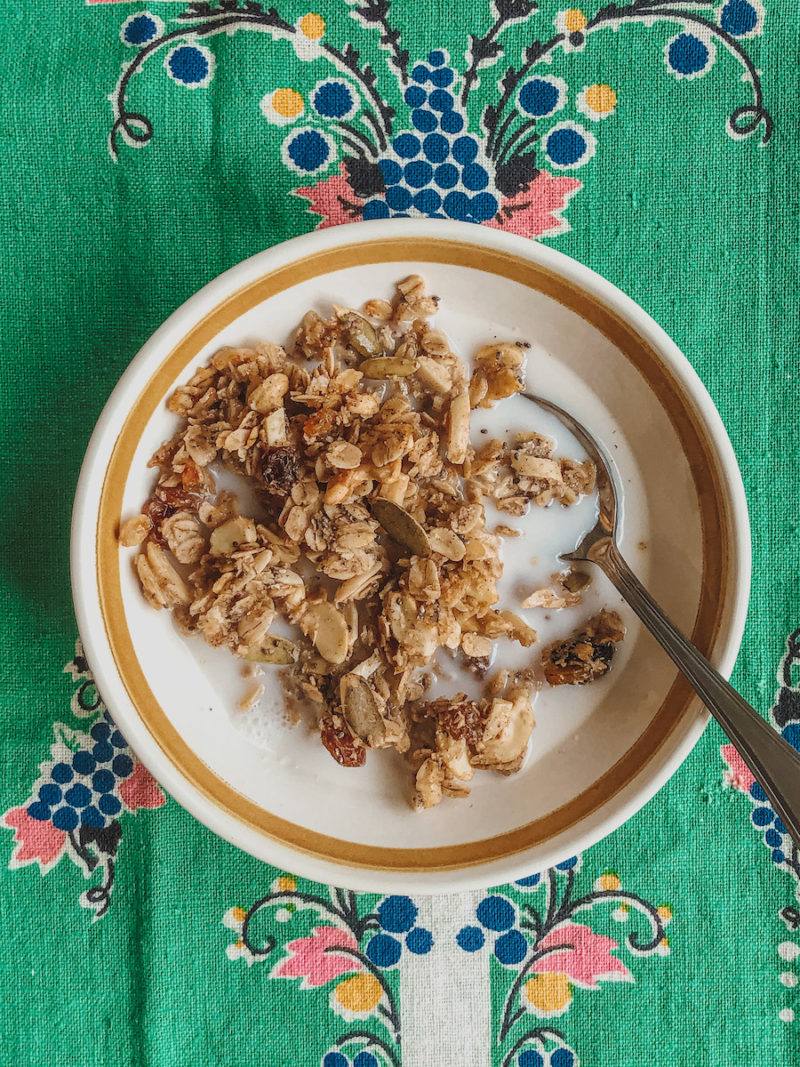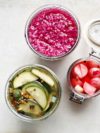
How To Quick Pickle Anything
Who doesn’t love pickles? I suppose those people may exist, but frankly.. I don’t want to know them. When most people think about pickles, they picture the yellow-tinted jars that line grocery store shelves, filled with cucumbers in either a dill or bread + butter variety. But pickles can really be any fermented vegetable or fruit. They add this perfect acidic tang and crunch to almost any meal, yet it’s still totally acceptable to eat them straight out of the jar. My kind of food.
Nothing is “wrong” with these modern day pickles, but as fermented foods have started to gain mainstream attention in the health world, things can get a bit confusing. Are all pickles considered a gut-food? What’s the deal with their good bacteria? Quick pickles, or the pickles you typically buy, are made using a mix of sugar, vinegar and spices. While it may be faster– these types aren’t doing any benefit to your gut (sugar helps bad bacteria to thrive).
Traditional Pickles vs. Quick Pickles
Lacto-fermentation is the traditional way that pickles have been made for hundreds of years. This process uses just salt and the veggie/fruit itself. The salt kills the bad bacteria, allowing the good bacteria to flourish and turn the natural sugars into lactic acid. This creates the acidic environment used to preserve the food and also provides that tangy flavor we all love. These naturally fermented foods do take longer to make, but they’re SO good for your gut!
While you can definitely buy these naturally fermented foods at the store, they will be more expensive. It’s funny how that works, right? The fewer ingredients, the more of a premium you usually pay. For this reason, I love to make my own pickled veggies at home! Sometimes I’ll use the old-fashion method with just salt, but when I don’t want to wait 2 weeks for things to ferment, I use this natural quick pickle recipe.
It’s the best of both worlds. You get pickles within a couple hours, yet you’re not dealing with sugars or added chemicals/dyes. Yes, most of those perfect dill spears include yellow dye to make them look more appealing. Gross. So here’s to supporting that gut of yours and adding pickled veggies to every meal!
This mix is literally just 3 ingredients (including water!), but if you like a little more punch (I do), you can add in extra spices or even a little honey to flavor them however you want. I love to pickle cucumbers, red onions, cabbage, and radishes. Add peppercorns, garlic cloves, turmeric, fennel– it’s really up to you so have fun and get creative!
PS: there aren’t specific measurements because it really comes down to the volume of vegetables + the size of the vessel you use. Glass is ideal so grab a few large jars for pickling! Hint: thrift stores always have amazing (and cheap) options.
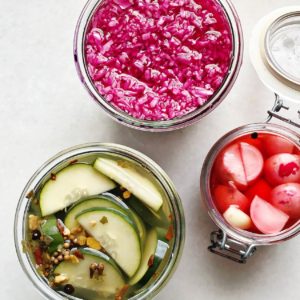
Ingredients
- veggies of choice
- apple cider vinegar
- sea salt
- water
- peppercorns, garlic, honey, mustard seeds, et
Instructions
- Chop up/slice desired veggies and pack them into glass jars of choice. I personally like to use a mandolin for red onion or cabbage as it creates the perfect thin shreds. If you’re adding in extras such as garlic or peppercorn, add them as well.
- Sprinkle items with a pinch of salt (1/16- 1/8 tsp for small-medium jars, 1/4 tsp for large) and then pour your apple cider vinegar to fill half of the jar.
- Top the remaining half with filtered water, cover, and gently tip/flip jar a couple of times to incorporate. Let sit on the counter for an hour (or up to 6). They’ll be ready to use after an hour, but will get even better with time.
- After this initial room temperature sit, store in fridge for up to a month!

